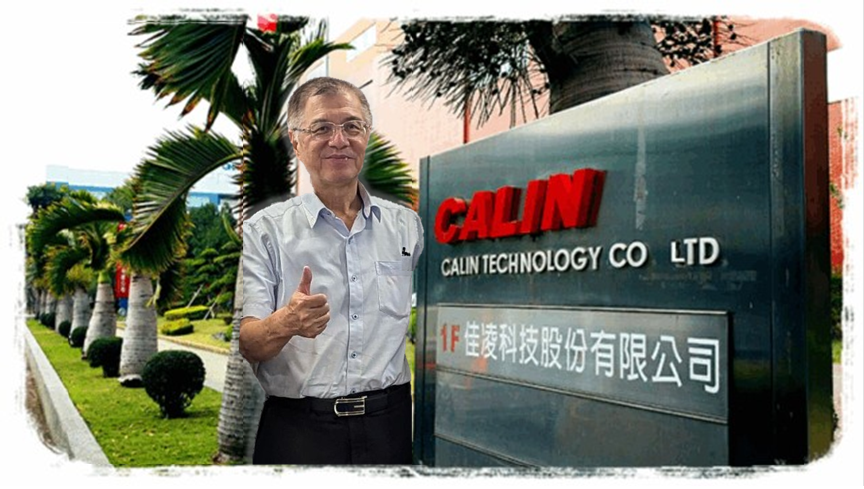
|
|
積極投資自動化及智慧化技術 專訪佳凌科技董事長劉嘉彬先生
根留台灣的企業典範—佳凌科技
佳凌科技,作為台灣光學產業的佼佼者,一直以來秉持著永續經營的核心價值。在這個競爭激烈的光學市場中,屹立不搖。它不僅根留台灣,同時,注重技術創新與品質卓越,更將財務安全及生產紀律、良好技術,視為企業發展的堅實基石。
佳凌積極投資自動化及智慧化技術 佳凌科技董事長劉嘉彬表示,光學產業的經營,不僅僅是眼前的訂單多寡,更重要的是良率的穩定與管理技術的提升。佳凌科技深知,高效的生產流程與卓越的技術支援,是持續發展的關鍵所在。因此,公司積極投資自動化及智慧化技術,致力於提升生產效率與品質標準,不斷超越自我,追求卓越。 在市場策略上,佳凌科技選擇專注於高階、高價位的鏡頭產品,避免因低價搶攻市場而陷入削價競爭的泥淖。這樣的策略不僅有助於提升品牌的附加價值,更能夠保護台灣光學產業在國際市場上的地位與競爭力。 近期,佳凌科技不僅穩固了現有客戶的信任與支持,更獲得了新客戶的青睞,訂單穩步增長。這不僅是產業界對佳凌科技技術實力的肯定,也是市場面對公司發展潛力的信心展現。 佳凌科技董事長劉嘉彬,亦是現任光學公會理事長。談到這兩個角色的扮演,劉嘉彬表示,前者要讓公司國際化;因為,客戶已國際化,再推生產線國際化,是必然的。後者,在光學公會理事長任內,將帶領會員廠商度過挑戰、創造新的商機,並適時對政府就當前產業環境,提出建言。 佳凌的光學技術能力,已具備國際競爭力 佳凌科技設立於2002年12月,高階經營團隊長期服務於光學產業,擁有豐富的資歷與經驗並傳承了日系光學大廠的經營管理與品質至上的理念。除了嚴謹的生產管理,也延攬擁有累積30年以上經驗的光學專業人才為產品嚴格把關,是少數具備能垂直整合光學元件製造能力的廠商。 佳凌科技提供各類型光學鏡頭的客製化開發服務、原廠的設計與製造代工。公司主要生產的鏡頭產品有車載鏡頭、監視器用鏡頭、投影機鏡頭、工業用鏡頭、醫療用內視鏡片以及極限運動鏡頭等。 公司董事長劉嘉彬相當活躍於產業界且熱心公益。對於公司的未來發展方向與目標具有遠見及期許。他說,過去幾年,國內除了少數鏡頭大廠,獨享智慧型手機鏡頭市場龐大需求,而掌握到商機外;其它光學廠,普遍陷入痛苦轉型期。不過,2022年開始,自動駕駛車載、物聯網、元宇宙(AR/VR智慧穿戴裝置等等)、無人機產業等新應用與高附加價值的需求逐步萌芽,國內眾多光學鏡頭廠商,可望迎來更燦爛的曙光。 疫情消退 部分廠商商機顯現 劉嘉彬指出,2019年底,全球疫情爆發後,受惠於遠距應用,如:視訊會議、視訊教育訓練、遠距醫療照護、監控診斷維護;與因應宅經濟需求的智慧型產品持續發展;數據顯示,國內光學產品幾乎是所有產業中,受損最為有限的產業之一。2023年疫情漸退,百業順勢逐漸恢復以往榮景,在市場上,沉寂已久的光學族群,亦正掌握時機蓄勢待發。國際市調機構TrendForce(集邦)預估,2022年至2028年,全球光學鏡頭產業的年複合年增可達8.1%;美國市場研究公司Grand View research報告也顯示,2021年至2030年間,全球元宇宙市場規模,預估複合年增率39.4%,國內相關廠商在上述市場需求重現、全球供應鏈重整及新舊動能推升下,很有機會重新站上台股主流行列。 誠如所知,國內光學業的發展歷史久遠,早期60年代日本、德國、美國…外資的投入,並協助在地建立光學產業發展基礎及人才培育體系,讓台灣光學產業風風光光超過半世紀,台灣廠商最擅長的生產供應鏈整合管理,也一路運行普及至中國、東南亞,成功複製生產及營運模式,拓展至亞洲地區各製造工廠。 然而,就整體光學鏡頭終端產品應用的轉型佈局,劉嘉彬再補充道,從簡單相機、數位相機、智慧型手機、車載應用、監控設備應用、資訊網路應用…,這幾年來,台灣廠商可以說是確實把握住機會與市場脈動,因應上客戶要求;但是,成熟產業發展至今,專業技術人才的流失(尤其中國市場對台灣人才的磁吸作用),新產品研發對應無法即時到位、廠商間鏡頭產品彼此同質性高,造成激烈的價格競爭、終端消費應用產品掌握在國際品牌大廠手中,嚴重壓縮台廠利潤…等等問題,確實造成國內光學產業在擴大經濟規模、創造優質獲利的努力過程中,形成一道不易突破的關卡。 劉嘉彬表示,台灣的光學元件製造產業,屬於高度充分競爭的生產模式,相較於整體光電產業,光學產業規模相對較小,產業內競爭廠商眾多,除了少數指標性大廠之外,一般來說小廠林立,各自發揮所長,不易整合成具有國際級研發及行銷戰鬥團隊。 劉嘉彬理事長對政府的建議 業界普遍認為,台灣區光學公會是國內最具代表性的光學產業組織,長期以來,致力於協助整體廠商橫向的協調/交流,與縱向的技術/管理發展,作為政府政策推行與產業脈動需求間的媒合橋樑。對政府產業政策的建議,公會理事長劉嘉彬列出三項,他說:強化培育光學產業專技人才、加速輔導光學產業轉型升級、與擴大媒合重要國際行銷展會,都非常重要。 在培育人才方面,目前國內大學專設「光學技術應用」相關系所,相對較少,長期以來,嚴重影響該領域人才的供給。因此,建議政府教育職訓部門,擇定多所工科專技大學,廣設光學相關系所或研究中心,獎勵學校培訓光學人才並導引順利就業,幫助業者長期發展所需。 其次,加速輔導光學產業轉型升級。相較於光電產業,政府投入於光學產業的輔導資源少之又少,造成國內光學廠商在技術升級,及營運轉型的過程中,備感資金成本壓力,導致在國際競爭市場中,遭遇嚴峻挑戰。因此,劉嘉彬建議政府產業發展部門,於年度科專發展預算中,應予分配一定比率,提供給光學業者提案申請,協助業者加速投入轉型升級。 再者,擴大媒合重要國際行銷展會。光學元件產業訂單來源一向受制於國外品牌大廠,透過交互比價及議價壓縮國內廠商應得利潤,造成業者營運日益艱辛;因此,劉嘉彬建議政府的經濟外貿部門,透過外交外貿管道,於國際展會前後期間,加強媒合國內參展廠商與國際品牌大廠、潛力客戶之合作機會,降低廠商市場摸索的風險與成本,協助廠商有效拓展商機。  |
